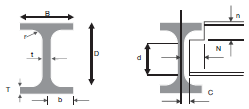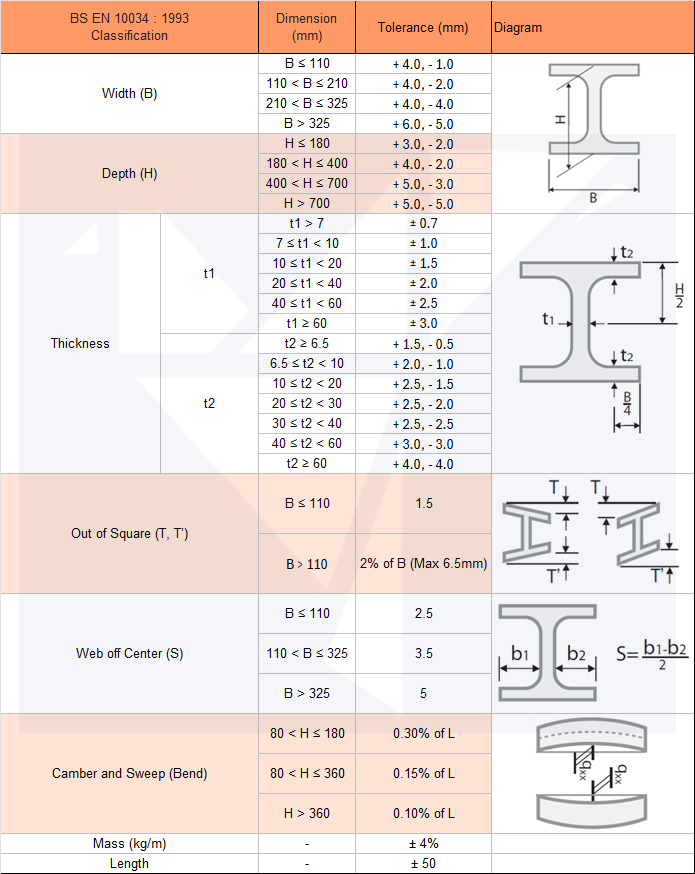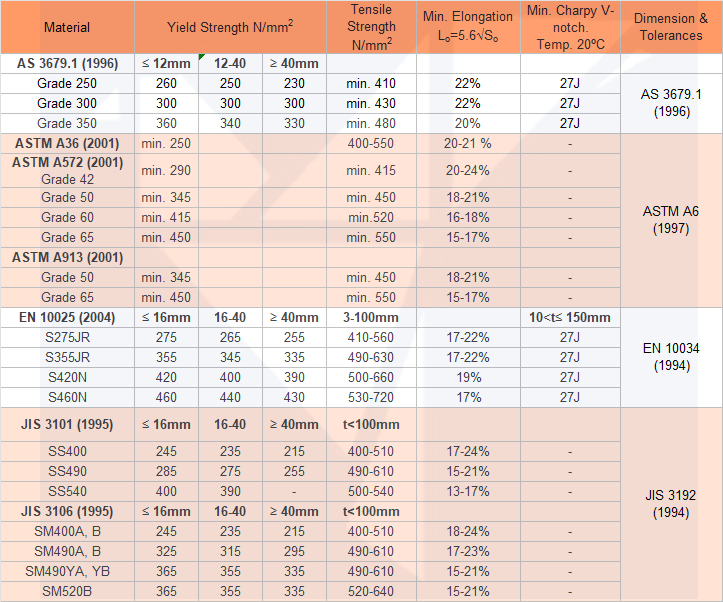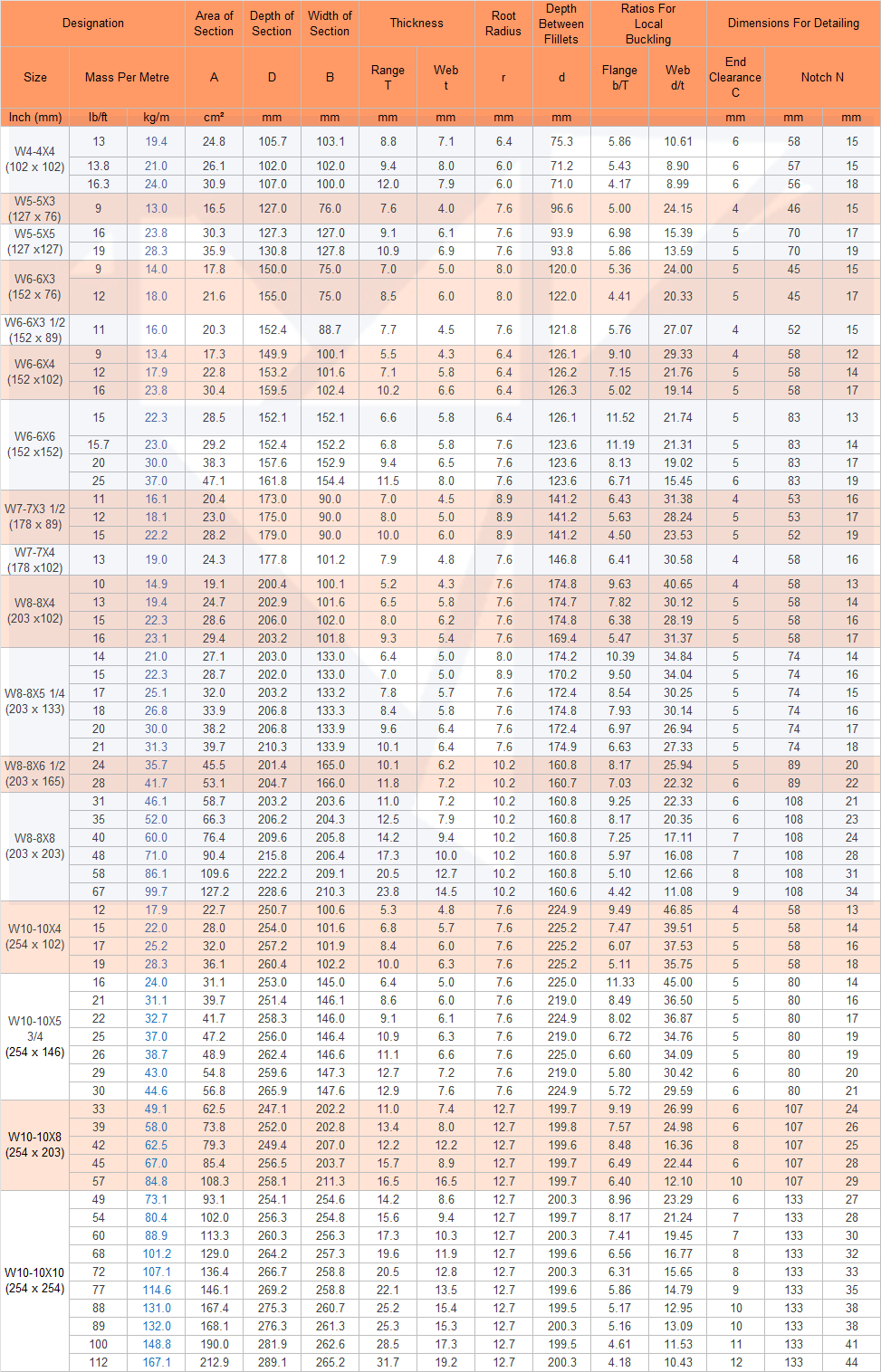UNIVERSAL BEAMS & COLUMNS
INTRODUCTION

Carbon steel structural beams are manufactured in two configurations. Both are constructed with a vertical web in the center of the beam, with horizontal flanges on top and bottom.
The structure of the beam provides superior load-bearing support.
• Standard American Beams – Also known as Junior Beams, S Beam, or I Beams have tapered flanges for increased strength of the flanges.
• Wide Flange Steel Beams - Also known as W Beams or H Beams have non-tapered flanges that are wider than the standard S or I beams.
I- and H- beams are widely used in the construction industry to provide support for buildings and load-bearing walls. They are available in a variety of standard sizes and selected based on the
applied load for the required application. I-beams may be used both as beams and as columns. I-beams, have high second moments of area, which allow them to be very stiff in respect to their
cross-sectional area.
APPLICATIONS
APPLICATIONS FOR I-BEAMS INCLUDES:
• Construction support beams for commercial and residential construction
• Support frames and columns for trolley ways, lifts and hoists
• Mezzanines and platforms
• Trailer and truck bed framing
APPLICATIONS FOR H-BEAMS INCLUDE:
• Construction support beams for commercial and residential construction
• Mezzanines and platforms
• Bridges
• Trailer and truck bed framing
• Machine bases
Dimension Tolerances - Wide Flange Beams
STANDARD SPECIFICATION
Universal Beams and Columns - (IMPERIAL UNITS)
PROPERTIES - W4 to W10

PROPERTIES - W12 to W14

DIMENSIONS - W16 to W24


PROPERTIES - W16 to W24


DIMENSIONS - W27 to W33


PROPERTIES - W27 to W33


DIMENSIONS - W36 to W44


PROPERTIES - W36 to W44


FAQ
Carbon steel structural beams are manufactured in two configurations. Both are constructed with a vertical web in the center of the beam, with horizontal flanges on top and bottom. The structure of the beam provides superior load-bearing support. I and H beams are widely used in the construction industry to provide support for buildings and load-bearing walls.
Universal beam Depth (height) are always taller than its width, while universal column usually has its height equal to width.






